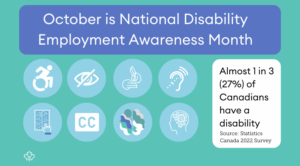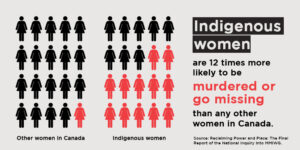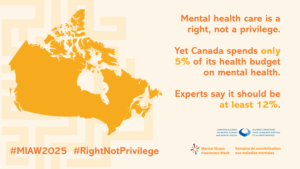
Leading with Inclusion This October: Essential DEI & HR Dates for Your Workplace
October is a powerful month for reflection and action. It’s filled with observances that celebrate diversity, equity, inclusion, and well-being from recognizing the histories and contributions of marginalized communities to advancing mental health awareness and employee wellness.
For HR and organizational leaders, these commemorative dates aren’t just symbolic, they’re opportunities to embed inclusion into workplace systems and culture. By thoughtfully engaging with these moments, leaders can spark authentic dialogue, create tangible change, and show employees that equity and care are woven into the fabric of their organization.
Why These Dates Matter for DEI and HR Leaders
Commemorative dates serve as entry points for systemic change.
They challenge leaders to ask:
- Are our policies equitable and accessible for everyone?
- Whose voices and histories are centered in our decisions?
- How do we move beyond awareness to action that dismantles barriers and improves employee experiences?
When approached with intention, these dates can help organizations:
- Educate teams and build shared language around inclusion.
- Identify and address systemic inequities in policies and practices.
- Foster psychological safety and belonging for all employees.
- Strengthen resilience by aligning business and people strategies with core values.
Planning for Impact: A Four-Step Framework
To get the most out of October’s observances, leaders can use this framework:
- Assess – Examine where your organization stands today. Look at data, employee feedback, and policies to identify gaps.
- Engage – Involve equity-deserving groups, ERGs, and diverse voices to ensure initiatives are authentic and relevant.
- Act – Launch tangible initiatives such as training, policy updates, or community partnerships.
- Sustain – Build these efforts into year-round strategies rather than limiting them to a single month or event.
Key October Dates
2SLGBTQ+ History Month
What it is:
A month dedicated to honouring the histories, contributions, and resilience of Two-Spirit, lesbian, gay, bisexual, transgender, and queer communities.
Why it matters
Representation matters. Recognizing these histories creates workplaces where 2SLGBTQ+ employees feel safe and valued.
Actions for leaders
- Update benefits and policies to reflect inclusive language for gender identity and sexual orientation.
- Provide training on allyship and unconscious bias.
- Partner with 2SLGBTQ+ organizations for education or mentorship programs.
Take a few moments and reflect on the following:
Do our policies and practices actively affirm and support 2SLGBTQ+ employees, or do they unintentionally create barriers?
Canadian Islamic History Month
What it is
A time to highlight Muslim Canadians’ diverse histories, contributions, and innovations.
Why it matters
Combatting Islamophobia starts with understanding and addressing bias, both systemic and interpersonal.
Actions for leaders
- Offer prayer and religious accommodations.
- Facilitate learning sessions on Islamophobia and its workplace impacts.
- Ensure policies explicitly protect against religious discrimination.
Spend a few minutes considering the questions below:
How well does our organization accommodate and celebrate religious diversity?
Global Diversity Awareness Month
What it is
Celebrates diversity worldwide and highlights the value of respecting cultural differences.
Why it matters
Diverse teams are stronger, more innovative, and better equipped to serve diverse customers and communities.
Actions for leaders
- Host training and team conversations about bias, inclusion, and global perspectives.
- Review recruitment and promotion processes for equitable access.
- Share stories of employees who are driving change.
Think about how these questions apply to you and your workplace:
How are we leveraging the diversity of our workforce to improve innovation and decision-making?
Women’s History Month
What it is
A month dedicated to celebrating women’s achievements and addressing barriers to gender equity.
Why it matters
True gender equity goes beyond representation to focus on fair access to opportunities, leadership roles, and pay.
Actions for leaders
- Conduct gender pay gap audits.
- Launch mentorship and sponsorship programs for women.
- Ensure policies support caregivers and equitable parental leave.
Challenge yourself and your team to reflect on the following:
Whose voices are amplified in our workplace—and whose may be overlooked?
National Disability Employment Awareness Month

What it is
Celebrates the contributions of workers with disabilities and promotes accessible, inclusive workplaces.
Why it matters: Accessibility is a cornerstone of equity, yet barriers persist in many workplaces.
Actions for leaders
- Conduct accessibility audits of hiring, onboarding, and physical spaces.
- Provide disability awareness and bias training for leaders and staff.
- Build inclusive career pathways with targeted recruitment.
Use this question to spark meaningful conversations and change:
Where might hidden barriers exist for employees with disabilities in our workplace?
Hispanic Heritage Month (Sept 15 – Oct 15)
What it is
A celebration of Hispanic and Latinx cultures, contributions, and histories.
Why it matters
Celebrating diverse cultural identities strengthens employee engagement and belonging.
Actions for leaders
- Spotlight Hispanic and Latinx voices through ERGs or storytelling campaigns.
- Build partnerships with Hispanic and Latinx-owned businesses.
- Incorporate cultural awareness into onboarding and team development.
Consider this question as you work to create lasting impact
How do we create space for employees to share their cultural identities at work?
National Day of Action for Missing and Murdered Indigenous Women and Girls (MMIWG) – October 4

What it is
A day to remember and advocate for missing and murdered Indigenous women, girls, and 2SLGBTQQIA+ (Two-Spirit, Lesbian, Gay, Bisexual, Transgender, Queer, Intersex, Asexual, and all others) people
Why it matters
It is a call for collective action to address the systemic violence and injustices faced by Indigenous communities.
Actions for leaders
- Provide paid time for employees to participate in community events or learning sessions.
- Support Indigenous-led organizations through donations or partnerships.
- Review workplace safety policies, particularly for Indigenous women in frontline roles.
Challenge yourself and your team to reflect on the following:
How do our policies and partnerships reflect a commitment to reconciliation and justice for Indigenous communities?
Body Confidence Awareness Week (October 6–10, 2025)
What it is
A week to challenge harmful stereotypes about body image and promote body diversity.
Why it matters
Weight bias and appearance-based discrimination deeply affect workplace culture and employee well-being.
Actions for leaders
- Address appearance-based bias in recruitment and promotion.
- Promote wellness programs that focus on well-being, not appearance.
- Create inclusive dress codes that respect cultural and personal expression.
Explore this question to uncover opportunities for growth:
Do our workplace practices unintentionally reinforce harmful stereotypes about body image or appearance?
World Mental Health Day – October 10
What it is
A global day to raise awareness and advocate for mental health support.
Why it matters
Mental health is foundational to employee engagement, retention, and performance.
Actions for leaders
- Offer mental health training for managers.
- Normalize conversations about mental health through visible leadership support.
- Ensure comprehensive, accessible mental health benefits.
Let this question inspire your next steps toward inclusion:
Do our employees feel safe to speak openly about mental health challenges without fear of stigma or judgment?
Mental Illness Awareness Week (October 5–12, 2025)

What it is
A week focused on reducing stigma and increasing understanding of mental illness.
Actions for leaders
- Share educational resources and personal stories to reduce stigma.
- Build psychological safety into team culture through open dialogue.
- Equip leaders to recognize signs of distress and respond with care.
Pause and think about this question:
Are we creating an environment where employees feel supported in seeking help?
Beyond October: Sustaining Inclusion Year-Round
October’s observances are powerful, but true impact comes from consistent, year-round action.
Strategies for ongoing commitment:
- Embed reconciliation into strategic plans and procurement policies.
- Regularly review engagement and retention data through an equity lens.
- Provide continuous learning opportunities through platforms like Equality 360.
- Tie DEI goals to leadership performance metrics to drive accountability.
- Celebrate diverse contributions throughout the year not just during specific months.
Stay Connected
Want to take the next step in embedding inclusion into your workplace?
- There’s still time in 2025 to start your DEI planning—download our free 2025 DEI Calendar to help guide your year-round strategy.
- Explore Equality 360’s microlearning modules, toolkits, and resources designed to support HR leaders and teams.
- Partner with us for customized DEI advisory and HR services, including organizational assessments, employee surveys, policy reviews, and strategic planning to create lasting, systemic change.
- Want more DEI insights, resources, and planning tools?
Sign up for our newsletter
For more information, or to start your inclusion journey, contact hello@canadianequality.ca.

